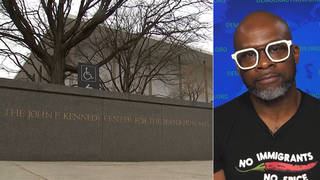
Topics
Alice Walker is the first African-American woman to win the Pulitzer Prize for fiction. But Monday, I called her to talk about a true story. The Obamas had just visited the White House. The first African-American elected president of the United States had visited his soon-to-be residence, a house built by slaves. Walker told me: “Even when they were building it, you know, in chains or in desperation and in sadness, they were building it for him. Ancestors take a very long view of life, and they see what is coming.” The author of “The Color Purple,” who writes about slavery and redemption, went on, “This is a great victory of the spirit and for people who have had to live basically by faith.”
Many decades ago, Alice Walker had broken anti-miscegenation laws in Mississippi by marrying a white man. She is a descendant of slaves.
While Barack Obama is not—he is the son of a Kenyan man and a white Kansan woman—his wife, Michelle, is, and so, too, are their daughters, Sasha and Malia. Michelle Obama’s ancestors come from South Carolina; her grandfather was part of the great migration north to Chicago.
Melissa Harris-Lacewell, associate professor of politics and African-American studies at Princeton University, reflected on the Obamas’ forthcoming move: “There are two African-American girls, little girl children, who are going to grow up with 1600 Pennsylvania Avenue as their home address. That’s an astonishing difference for our country. It does not mean the end of racial inequality. It does not mean that most little black girls growing up with their residence on the South Side of Chicago or in Harlem, or Latino boys and girls growing up at their addresses, that the world is all better for them. But it does mean that there is something possible here.”
Construction of the White House started in 1792, with sandstone quarried by slaves in Aquia, Va., then transported up the Potomac River and hauled into place by slaves. The White House Historical Association lists several of the slaves on that historic construction crew: “Tom, Peter, Ben, Harry and Daniel, three of whom were slaves owned by White House architect James Hoban.” Stonecutters, or sawyers, “on government payrolls, such as ‘Jerry,’ Jess,’ ‘Charles,’ ‘Len,’ ‘Dick’, ‘Bill’ and ‘Jim’ undoubtedly were slaves leased from their masters.” Randall Robinson, in his book “The Debt,” wrote of slave labor in the construction of the U.S. Capitol: “The worn and pitted stones on which the tourists stood had doubtless been hauled into position by slaves, for whom the most arduous of tasks were reserved. They had fired and stacked the bricks. They had mixed the mortar. They had sawn the long timbers in hellishly dangerous pits with one slave out of the pit and another in, often nearly buried alive in sawdust.”
Looking forward, Barack Obama can make history in another way. The executive orders he issues will set the tone of his presidency and could usher in a new era. Human-rights groups are calling for the closing of the Guantanamo prison camp and CIA “black sites,” where torture has been commonplace.
Which brings us back to slavery. When Frederick Douglass, the renowned abolitionist, was young, he was enslaved on a plantation on Maryland’s Eastern Shore, called Mount Misery, owned by Edward Covey, a notorious “slave breaker.” There, physical and psychological torture were standard. That property, today, is owned by Donald Rumsfeld, the former secretary of defense who was one of the key architects of the U.S. military’s program of torture and detention.
With the stroke of a pen on Inauguration Day, President Obama could outlaw torture. It would be a tribute to those slaves who built his new home, the White House, a tribute to those slaves who built the U.S. Capitol Building, a tribute to those who were tortured at Mount Misery.
Denis Moynihan contributed research to this column.










